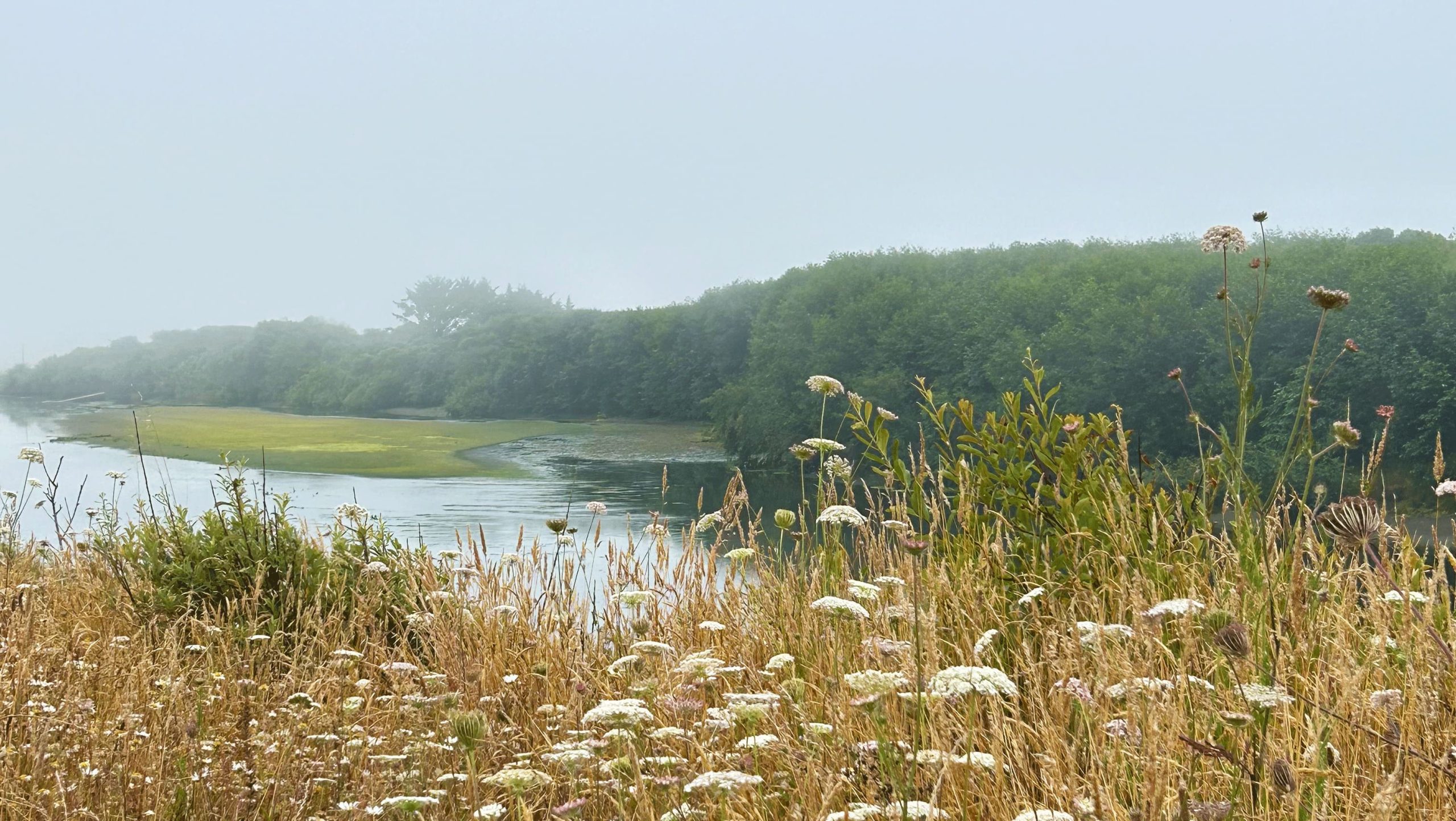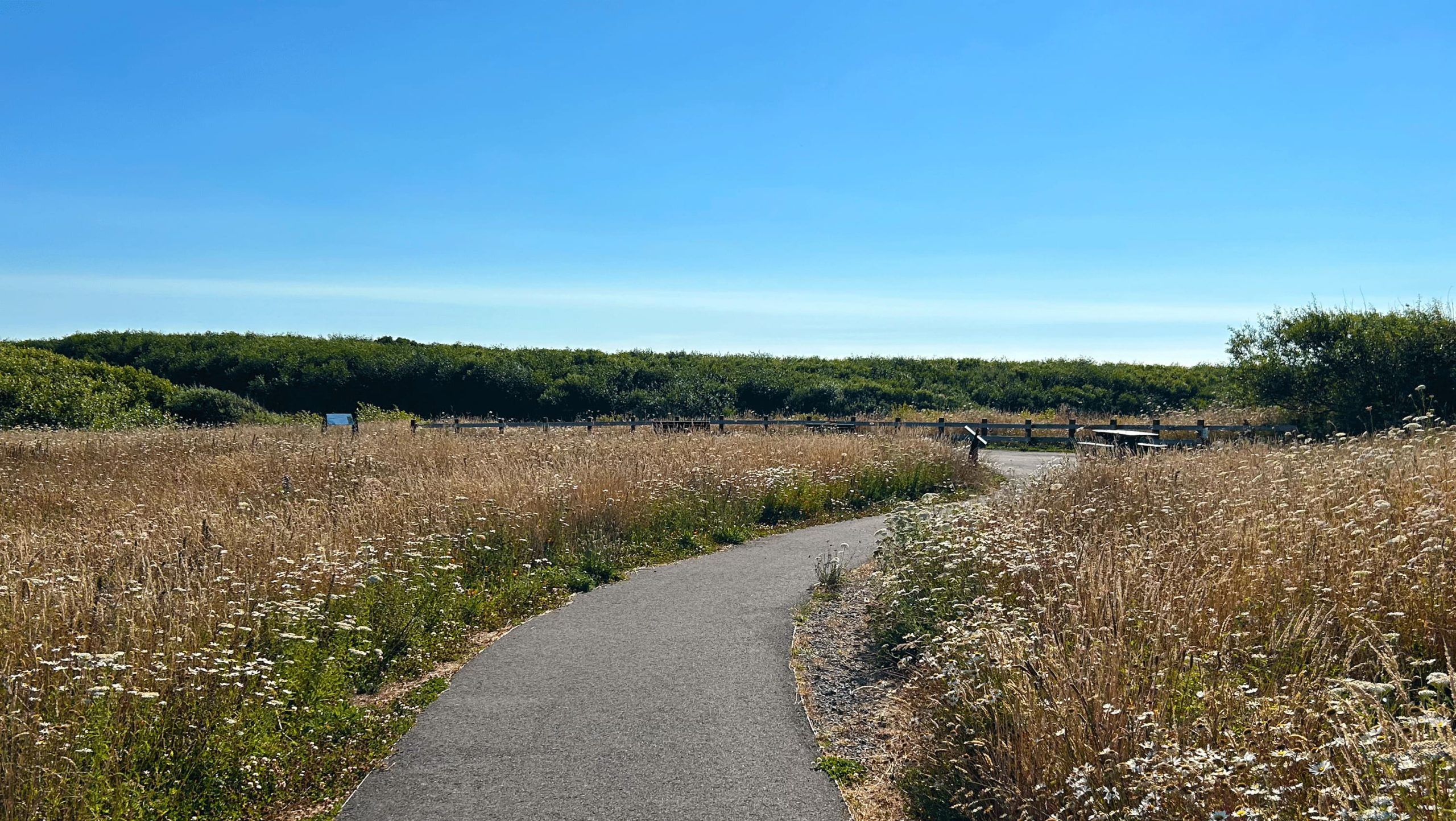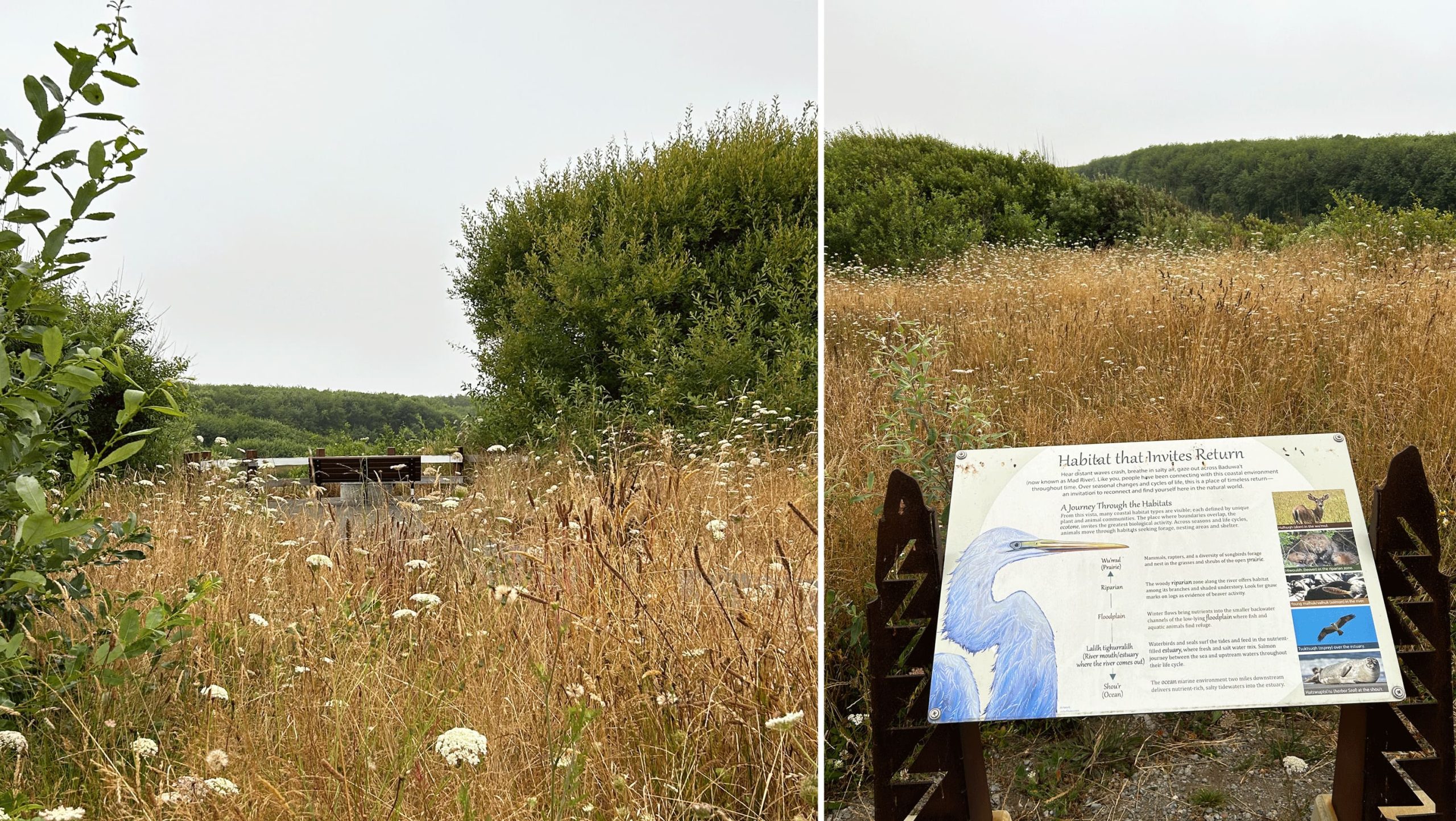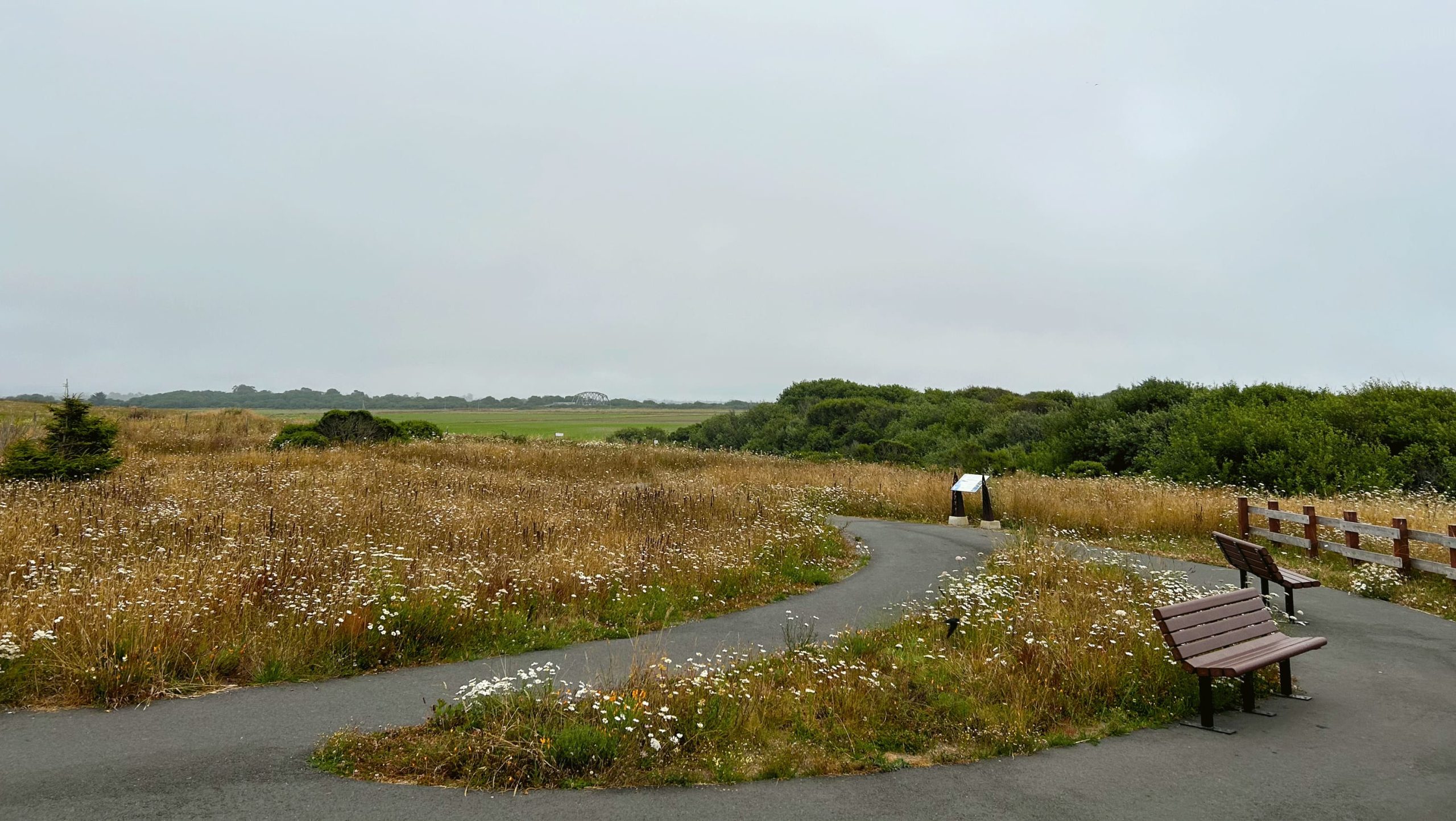A new accessible trail has been developed on the bluff top overlooking the Baduwa’t Estuary (formerly Mad River) in McKinleyville, California. This trail, situated on McKinleyville Public Services District property, is part of a larger project that includes extensive wetland and habitat restoration. Integrated into the regional trail network, it connects with the Hammond Coastal Trail via the School Road Trail, offering visitors access to diverse coastal habitats.
The trail features a meadow walk with panoramic views of the riverine coastal landscape, two overlooks equipped with benches, picnic tables, and interpretive exhibits. Future plans include extending the trail to provide access to the river with a small canoe and kayak launch site. This project exemplifies how public access can be thoughtfully designed to complement ecological restoration efforts while providing recreational opportunities and educational experiences for visitors
Size
±1.8 acres
Client
California Trout
Team
JNRA (Landscape Architect)
SHN Engineers
(Civil Engineers)
Scope
Schematic Design to Construction Documents









A new accessible trail has been developed on the bluff top overlooking the Baduwa’t Estuary (formerly Mad River) in McKinleyville, California. This trail, situated on McKinleyville Public Services District property, is part of a larger project that includes extensive wetland and habitat restoration. Integrated into the regional trail network, it connects with the Hammond Coastal Trail via the School Road Trail, offering visitors access to diverse coastal habitats.
The trail features a meadow walk with panoramic views of the riverine coastal landscape, two overlooks equipped with benches, picnic tables, and interpretive exhibits. Future plans include extending the trail to provide access to the river with a small canoe and kayak launch site. This project exemplifies how public access can be thoughtfully designed to complement ecological restoration efforts while providing recreational opportunities and educational experiences for visitors
© All rights reserved WiLD LandArch